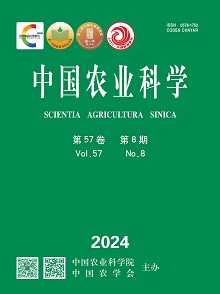|
|
The Disaster, Ecological Distribution and Control of Poisonous Weeds in Natural Grasslands of Xinjiang Uygur Autonomous Region
YAN Du-jian, ZHOU Qi-wu, LU Hao, WU Chen-chen, ZHAO Bao-yu, CAO Dan-dan, MA Feng, LIU Xiao-xue
Scientia Agricultura Sinica
2015, 48 (3):
565-582.
DOI: 10.3864/j.issn.0578-1752.2015.03.16
Natural grassland is the material basis for the development of husbandry in the minority area, and it is also a very important component to maintain the balance of natural ecological environment in Xinjiang. For a long time, because of drought, severe overgrazing, blind reclamation, population increase and other natural and man-made factors, as well as inadequate infrastructure construction and lagging management of the grass, high-quality forage is decreasing year by year and poisonous weeds are fast spreading, leading to grasslands reverse succession and contagious poisonous weeds, widespread desertification, destroying the balance of natural ecological environment, and a large number of livestock poisoning even death due to grazed poisonous weeds mistakenly. Especially in recent decades, the rapid spreading of poisonous weeds have caused the reduction of grassland vegetation and biodiversity, the simplification of vegetation, decline of grass yield, and the degeneration of natural grassland with edible pasture grass, instead of more different levels of degraded grasslands even severe contagious poisonous weeds. In some regions, the grassland poisoned has led to the poisonous grass disaster take place frequently, even broke out, which have increased from the basic ecological problem to a social problem, seriously affected the local social stability and grassland ecological security. At present, more than 85% available natural grasslands are degenerating to a greater or lesser extent and 37.50% of them are severely degraded, with an poisonous weeds disaster area of nearly 700 million hm2, which has accounted for 20.42% of the total hazard area of natural grassland of the country, and the annual death number of animals with poisoning is more than 3000 in average . Xinjiang natural grassland contains common poisonous plants of 81 species, 24 families and 54 genera. Among them, the Aconitum carmichaeli, Aconitum soongaricum, Achnatherum inebrians, Oxytropis glabra, Astragalus variabilis, Anabasis aphylla, Pedicularis, Ligularia sibirica and Cucuta virosa are more serious harmful poisonous weeds to grassland animal husbandry, which accounted for approximately more than 80% of the total poisonous weeds hazard area. Therefore, a comprehensive understanding of poisonous weeds disaster situation in natural grassland of Xinjiang, weed species and geographic distribution, the effective prevention and control, the solution of the poisonous weeds disaster, is of great significance to improve the grassland productivity and forage quality, promote the sustainable development of animal husbandry in pastoral areas and farmers’ income, flourishing frontier minority economy and stabilize the ecological environment balance. According to the analysis and summary of data reported and results of the project group actually investigated in Xinjiang natural grasslands, the disaster situation, species of poisonous weeds and geographical distribution, prevention and control measures and reasonable utilization are reviewed. The disaster condition of regional grassland ecological and animal husbandry production caused by the poisonous grass, main poisonous grass species, geographic distribution and damage area of natural grassland in Xinjiang is summarized, respectively. At the same time, on the basis of the project team dedicated to the prevention and control of the China’s western poisonous grass research for many years, the existing problems and reasons of poisonous grass varieties, severe disasters, difficulty of prevention and treatment in natural grassland of Xinjiang were analyzed. The authors put forward some thoughts that from the angle of the ecology, the traditional control idea should be changed to strengthen the research of poisonous plant biology, ecology, toxicology characteristics, prevention and control of poisoning disease as well as comprehensive utilization etc. Thus it is helpful for us to understand the scientific poisonous weeds. Based on the principle of “change harm into good, make waste profitable”, place equal stress on ecological protection and development and utilization, study and learn from the successful technologies in prevention and control of poisonous plants in developed countries such as USA, take comprehensive prevention and control technology that ecological control means combined with other multiple methods to prevent poisonous weeds disaster, thus providing people with the basic information to know and research of the main poisonous weeds in natural grasslands in Xinjiang.
Reference |
Related Articles |
Metrics
|
|











